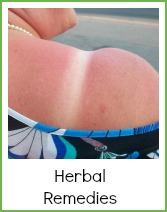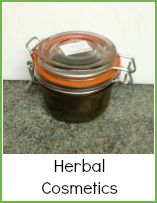- The Herb Guide Home
- Remedies
- Migraines
Migraines
As an Amazon Associate I earn from qualifying purchases

Migraines are more than a severe headache.
People frequently experience nausea, vomiting, sensitivity to light or sound and a pulsing, throbbing head.
It's more common in women than men and many people report a lessening with age. This could be due to identifying what triggers an attack - something you might only find with time.
Having said that, boys and girls suffer equally so it's thought to be influenced by hormones for this reason.
The cure is commonly analgesics for the headache and an anti-emtetic for the nausea.
Things such as Migraleve contain analgesic and anti-emetic and the sooner you take them the better.

You can try a sample lesson to help you decide if the Herbal Academy of New England is the right choice for you - follow the link below.
Doctors can prescribe many things, but it's better to find how to prevent it rather than try chemicals to bombard your system if you possibly can.
Sufferers often find a 'trigger' - common triggers are chocolate, wine or cheese. All of these things can be eaten individually, but it's when one or more of them are mixed that the attack is triggered.
Gluten is another culprit as is aspartame and monosodium glutamate.
Identifying your trigger is sometimes the first step in finding a solution.
Migraines - keep a food diary as it could be diet related
You might benefit from keeping a food diary so that you are better able to identify what combination doesn't suit you.
For instance, my mother found that if she ate chocolate and drank alcohol, she suffered an attack. She got round this by deciding in advance at a meal out if she wanted a pudding. If she did, she didn't drink wine, if she didn't she would have the wine.
It's important not to get dehydrated, don't skip meals if you can help it, try to eliminate stress and get adequate sleep.
Feverfew has been proven to be very effective in eliminating or lessening the severtity or frequency of attacks. It works as a preventative and will be ineffective to relieve the pain of an attack.
You can take it as a tea. It can be quite bitter, so you will probably want to sweeten it with honey.
Take a cup a day - brew a tablespoon of fresh or a teaspoon of dried feverfew leaves in 1 Cup (1/2 pint or 250ml ) boiled water. Leave for about 10 minutes then strain.
It has been used for centuries to lower fevers and cure headaches, but it was only in 1974 that a Welsh doctor's wife used it to cure her own chronic migraines.
Some people add the leaves to a sandwich on a daily basis - try both ways and see which you prefer - maybe dried out of season? Do be aware that feverfew can burn your mouth - wrap it in bread so you don't actually chew it.
Do not use it if you are pregnant.
If your mouth becomes sore, then don't use fresh feverfew, try dried or liquid extract. Feverfew can cause a skin rash. If you get a rash after touching the plant, do not take it internally.
The information on this website is in no way intended as medical advice and nor should it be taken as such.
If symptoms don't improve, consult your doctor.
If you have a medical condition, you must consult a Herbal Practitioner or a Medical Doctor.
If you are pregnant, you must consult your doctor or nurse before trying any herbal remedy.
If you are already taking pharmaceuticals, then speak to your doctor about taking herbs - some drugs react badly with herbs and you need to know that you are not going to do more harm than good.
These pages will also be of interest to you
I may receive a commission if you purchase something mentioned in this post. See more details here This will not affect the amount you pay.




